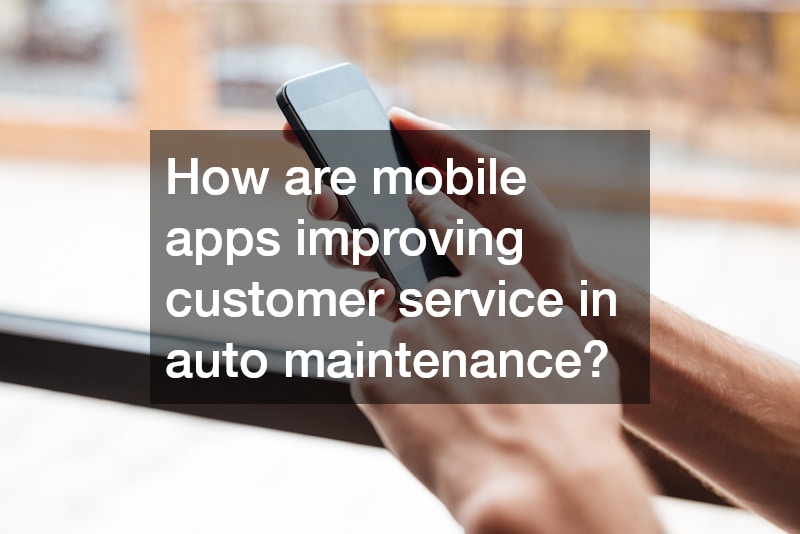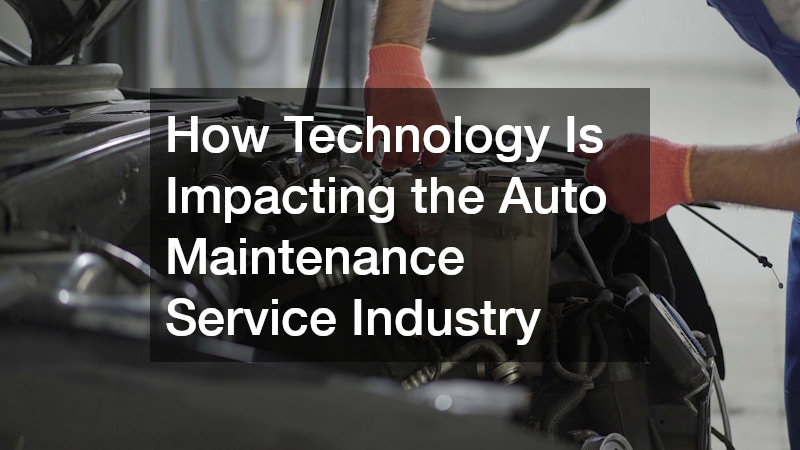Technology has evolved rapidly over the past few decades, influencing various sectors in ways we never thought possible. The auto maintenance service industry is no exception, as technological advancements have introduced more efficient, precise, and convenient maintenance solutions for both technicians and vehicle owners alike. As technology continues to progress, it reshapes how the auto maintenance service industry operates, ensuring that providers remain competitive while offering higher quality services.
How are digital diagnostic tools changing auto maintenance?
Advancements in Diagnostic Software
New software tools have revolutionized the way technicians approach vehicle diagnostics, with the ability to quickly and accurately identify issues that can otherwise go unnoticed. These advancements allow for a more data-driven approach to vehicle maintenance, ensuring that problems can be addressed before they become significant concerns.
The integration of digital diagnostics in auto maintenance has increased the accuracy rates of vehicle inspections, reducing the chance of misdiagnosis. This technological innovation provides technicians with a comprehensive view of potential issues, thus optimizing repair strategies and ensuring the best outcomes for vehicle health.
With these sophisticated diagnostic tools, routine check-ups have become more effective, offering insights that were previously unattainable with traditional methods. Consequently, customers can enjoy peace of mind knowing their vehicles are in optimal condition thanks to cutting-edge diagnostic technologies.
Impact on Service Speed and Efficiency
The introduction of digital diagnostic tools in the auto industry has significantly enhanced service speed, allowing for quicker turnaround times without compromising accuracy. By streamlining the diagnostic process, auto repair shops can accommodate more customers, offering them the convenience of shorter wait times.
Increased efficiency is another hallmark of digital diagnostic tools, as they enable technicians to swiftly pinpoint issues and proceed with necessary repairs. This efficiency extends to operational processes, reducing downtime and fostering an environment where productivity thrives and customer satisfaction is prioritized.
The accuracy and speed afforded by these tools translate to a higher client retention rate, as satisfied customers are more likely to return for future services. Ultimately, the integration of such technology catalyzes improved service quality, ensuring customer loyalty and trust in the long run.
What role does the Internet of Things (IoT) play in vehicle maintenance?
Real-time Monitoring and Data Collection
Internet of Things (IoT) devices have transformed vehicle maintenance by enabling real-time monitoring and data collection, providing invaluable insights into a vehicle’s condition over time. This continuous monitoring enables proactive maintenance strategies, ensuring issues are detected early and addressed promptly.
The data procured from IoT devices allows for a more personalized approach to vehicle maintenance, as technicians can tailor services based on the unique needs of each vehicle. This level of customization enhances the customer experience, fostering trust and satisfaction with service providers.
Moreover, IoT’s role in data collection aids in creating a comprehensive maintenance history, invaluable for both technicians and vehicle owners. This historical data empowers informed decision-making, contributing to improved vehicle longevity and performance.
Preventive Maintenance and Cost Savings
IoT technology has made preventive maintenance more actionable and cost-effective, significantly reducing the chances of major repair scenarios. By predicting potential issues before they escalate, vehicle owners can appreciate a reduction in maintenance costs and avoid costly repair bills.
Preventive maintenance strategies enabled by IoT devices also ensure vehicles remain in top condition, contributing to safer, more reliable transportation. Auto maintenance service providers benefit from this technology as it allows them to optimize their service offerings and enhance customer satisfaction.
The real-time data provided by IoT technologies equips technicians with the tools needed to address problems prematurely, extending the lifecycle of vehicle components. This proactive approach not only saves money but also aligns with the broader goal of sustainable vehicle maintenance practices.
How are mobile apps improving customer service in auto maintenance?
Convenience and Accessibility
Mobile apps have revolutionized the customer experience in the auto maintenance sector, making it easier than ever to schedule services and track repairs. This convenience factor is highly valued by customers who lead busy lives and require accessible service options at their fingertips.
The ability to book appointments, receive updates, and track repair progress through mobile apps has streamlined communication between service providers and clients. This advancement removes barriers that previously existed, allowing for a seamless and stress-free vehicle maintenance experience.
The growing reliance on mobile apps has prompted service providers to invest further in enhancing these platforms, ensuring a user-friendly experience that meets evolving customer expectations. This digital transformation represents a pivotal shift in how auto service centers engage with their clients, setting a new standard for customer service excellence.
Enhanced Communication and Transparency
Mobile apps are pivotal in fostering transparent communication between service providers and vehicle owners, offering them real-time access to information and updates. This transparency is critical in establishing trust and building long-lasting relationships between customers and service providers.
The use of mobile apps enhances communication efficiency, allowing for quicker responses to customer inquiries and the swift resolution of any concerns. By keeping customers informed, these apps support a more engaged and satisfied clientele, reducing the likelihood of misunderstandings.
Technological advancements in mobile communication empower customers with the information they need to make informed decisions about their vehicle maintenance. This approach ensures a higher degree of satisfaction and aligns service standards with customer expectations, resulting in an overall improved service experience.


